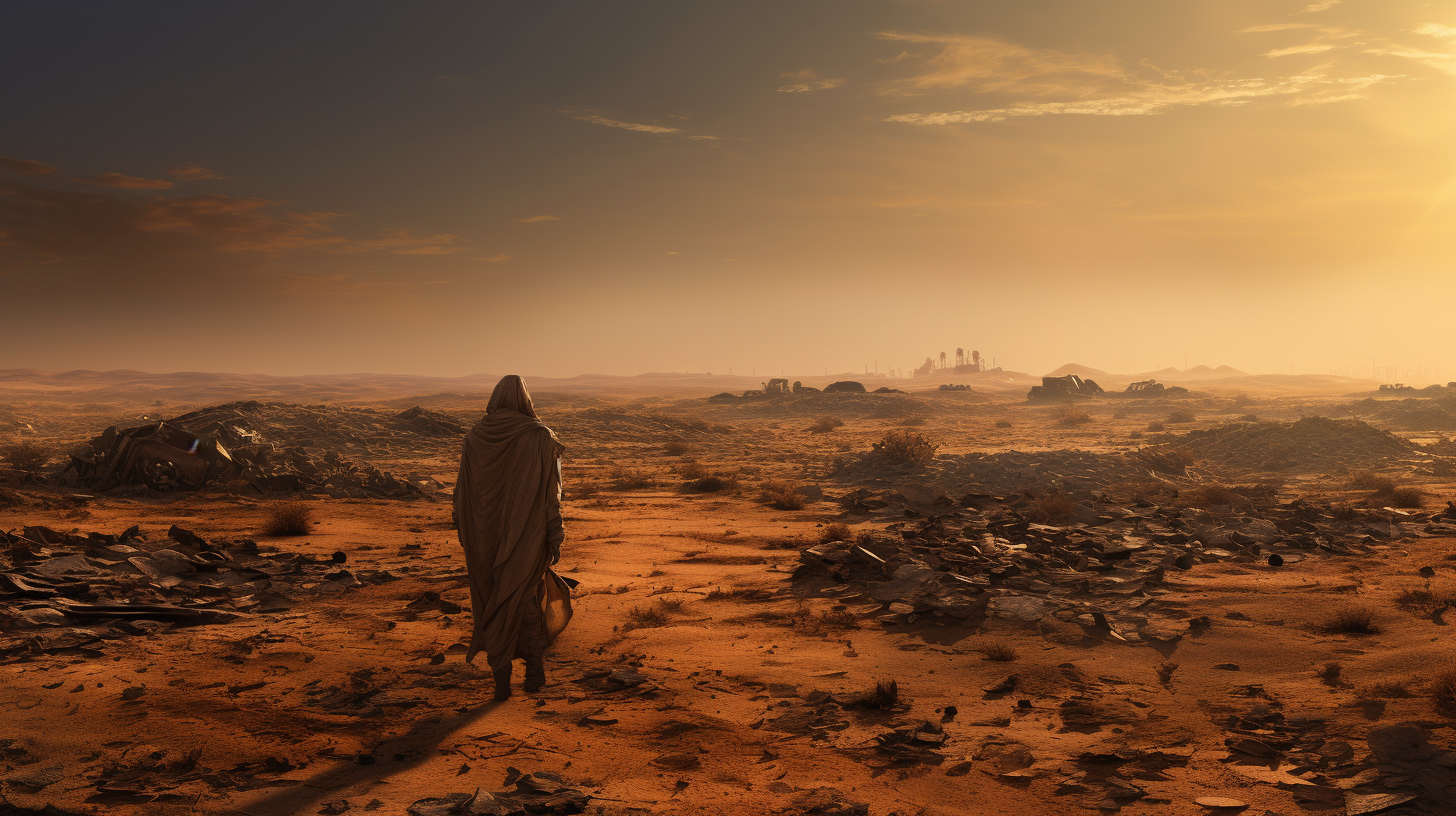In the relentless embrace of the sand and sun, a new epoch has taken root. It is here, amidst the vast expanse of the former verdant lands now swallowed by desert, that humanity finds its latest adaptation—the New Nomadic Tribes of the Desert. These tribes wander tirelessly over the dunes, their existence reduced to a harrowing quest for the ever-elusive resources synonymous with survival.
Once bustling metropolises have crumbled, their skeletal remains picked clean by the windborne sand. The world of shopping malls, running water, and green lawns is now but a myth—a fable recounted by elders beneath the canvas shelters of the roving clans. The nomads, resilient and resourceful, have forged new societies, with life revolving around fundamental needs and tribal bonds.
These tribes, diverse in their composition, tell a story not just of collapse, but of reconnection with the natural world—though their natural world is far from nurturing. Water is as precious as blood; food is scavenged and foraged; energy is derived from the untiring sun. Tattered and repurposed technologies serve as relics, connecting these wanderers with the ghostly digital echoes of the past.
Trade among the tribes pulses like the lifeblood of this new society. Caravans draped with sun-bleached fabrics carry goods varying from salvaged electronics to homemade textiles, maintaining a lifeline of commerce and communication. Yet life is not without its tumults; conflicts arise when desperation meets scarcity—water wars, shelter skirmishes, and solar supremacy become the new disputes of this ravaged realm.
According to a long-since-retired geologist, ‘We saw the signs, the creeping deserts, the loss of biodiversity, but the world was too caught up in its dance of consumption and waste. Now, the dance continues to a different, more somber tune.’ These words echo amid the tribes’ nightly gatherings as they strategize for survival beneath a star-drenched sky, unobscured by light pollution, yet cold and indifferent to their plight.
The children of the desert have taken to ephemeral play, chasing each other through the remnants of what were once playgrounds, their laughter carried away by the relentless zephyrs. Their parents, watchful and ever-vigilant, tell tales woven with the wisdom of adaptation—educating not just on survival, but on the stories of a greener past, primed to be carried forward through oral tradition.
Conversations often pivot to the innovation born of necessity. Portable desalination units repurposed from old-world tech, solar stills cleverly crafted from castoff materials, and water-harvesting techniques imbued with the cunning of desert creatures—all these are testaments to the human spirit’s ingenuity in the face of adversity.
Visions of a once-thriving world meld with the stark reality of the present as the tribes’ shamans and sages foresee grim futures in the swirling sands. Yet it is in these prophecies that we find not just despair, but the essence of the human condition: an unyielding confrontation with destiny and the environment, and a drive to pursue life, against all odds.
This chronicle—narrative of survival, resilience, and the indomitable essence of what it is to be human—beckons the reader to ponder deeply on our collective path. For while the tribes have accepted their fate in this desolate world, their ethos stands as a mirror to ourselves, reflecting the consequences of our own environmental neglect and the irreversible shifts of our planet’s delicate balance.
So let us bear witness to the tribes of the desert, their lives a tapestry of cautionary tales and intrepid adaptation, a canvas painted with the sands of time, set against a backdrop of humanity’s indelible impact on Earth. In the still silence that follows the whispering winds, may we find the resolve to change our course, if only in the hopes that such stories remain within the realms of cautionary fiction, and not a grim prophecy of our assured future.
